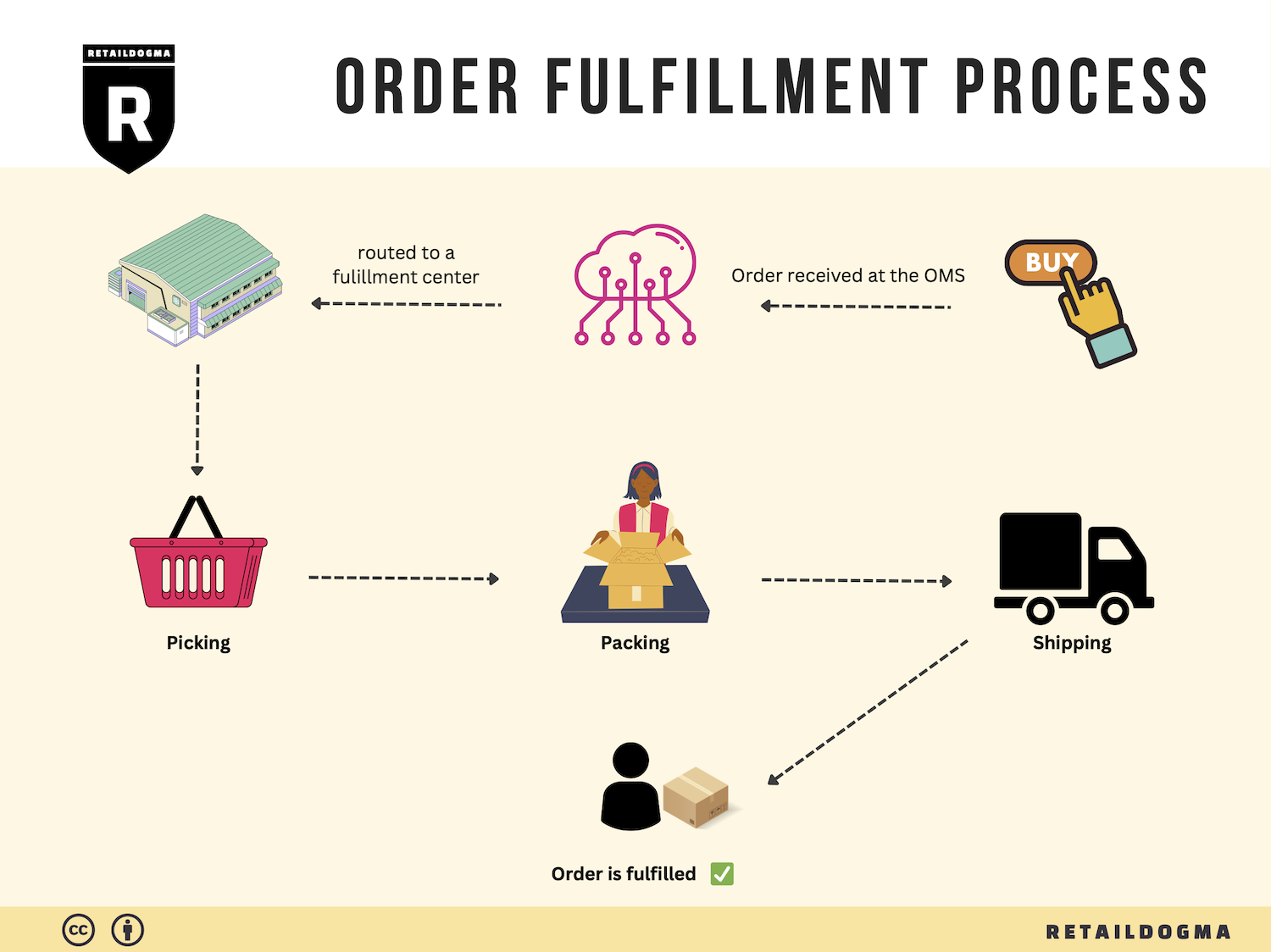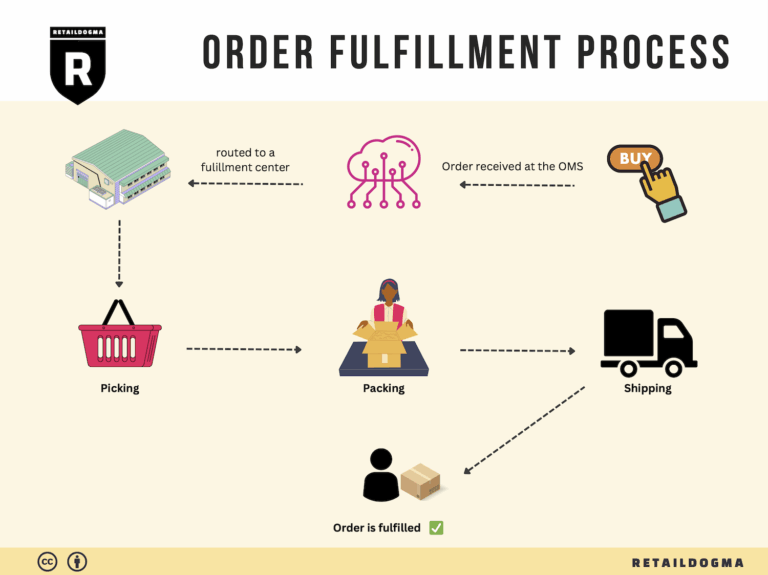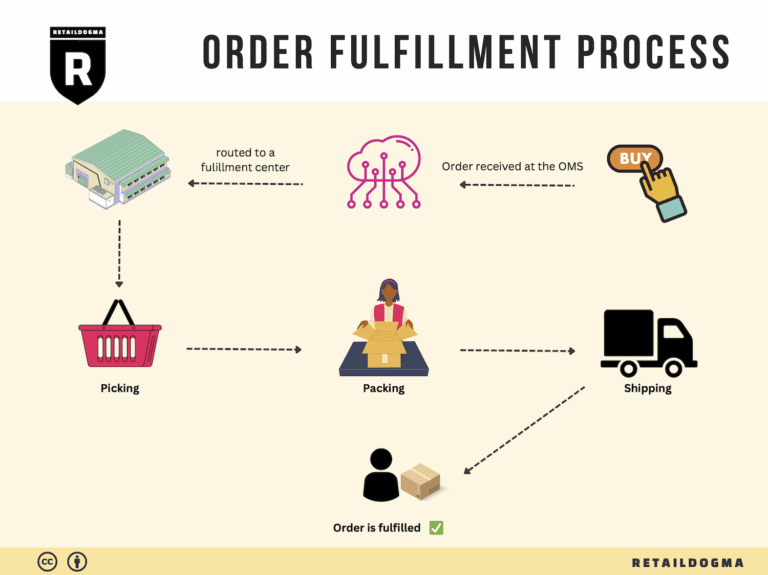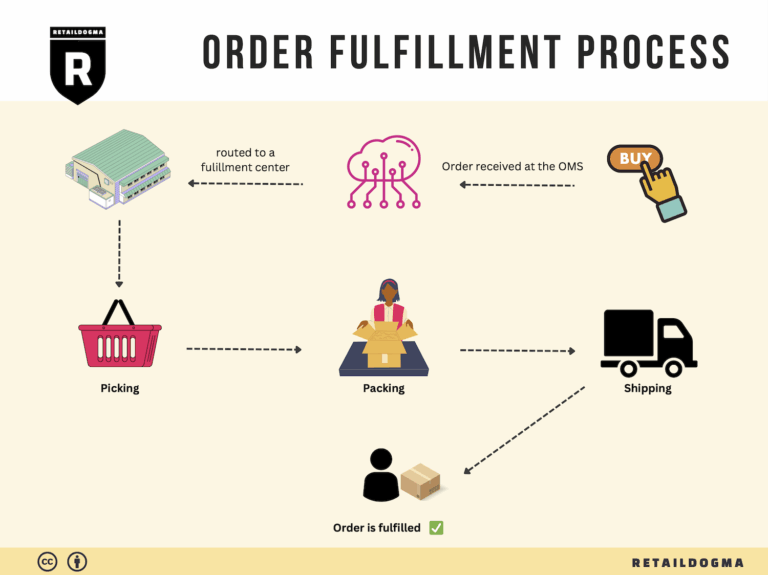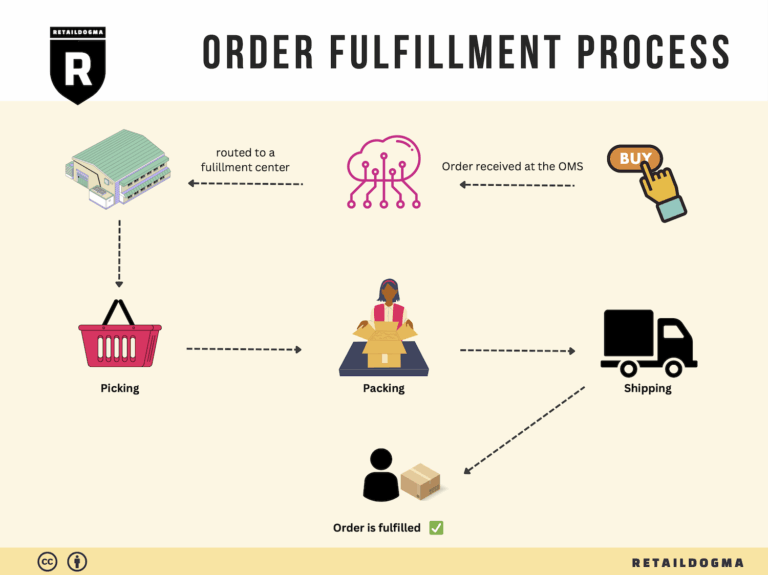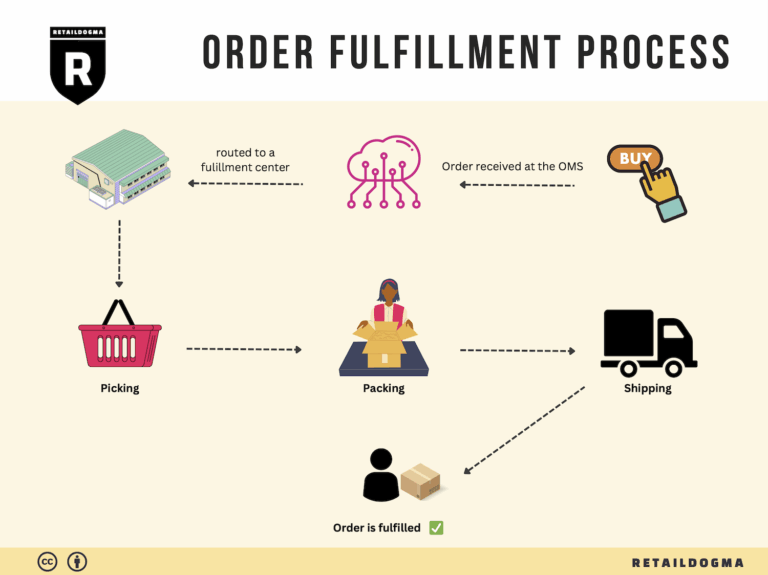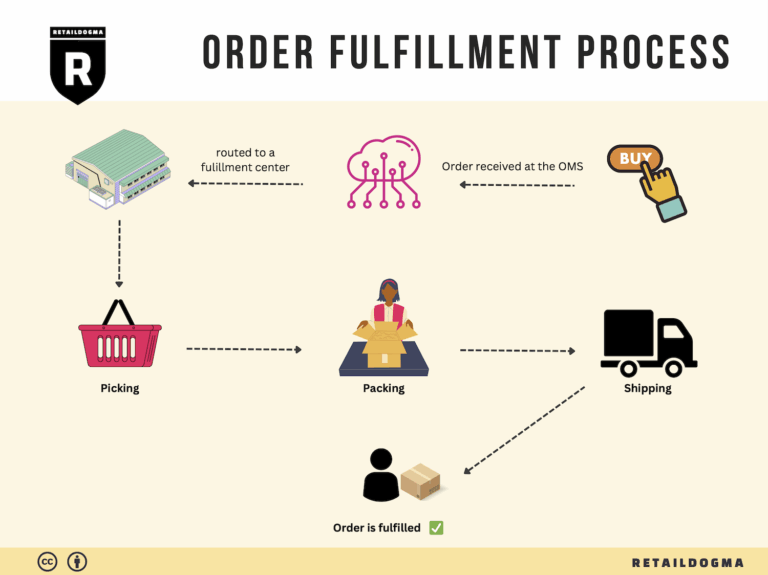Ecommerce Fulfillment Services: The Ultimate Guide (2025)
What is E-commerce Fulfillment? An Introduction for Growing Businesses
Understanding E-commerce Fulfillment
As an e-commerce business owner, you may find yourself grappling with a familiar challenge: the overwhelming task of packing and shipping orders. While the excitement of increasing sales and attracting new customers is invigorating, the logistics of delivering products can quickly become a daunting responsibility. This is where e-commerce fulfillment comes into play—a crucial process that encompasses everything from receiving inventory to delivering products to customers’ doorsteps.
At its core, e-commerce fulfillment is the comprehensive system of getting a product from your online store into the hands of your customers. It involves several key components, including inventory management, order processing, packing, shipping, and handling returns. As your business scales, managing these aspects in-house can become increasingly complicated and time-consuming. This guide aims to demystify e-commerce fulfillment and provide actionable insights for growing businesses looking to streamline their logistics operations.
In this guide, we will explore various fulfillment models that can suit your business needs, such as third-party logistics (3PL) and Fulfillment by Amazon (FBA). Each model has its own advantages and drawbacks, and understanding them will empower you to make informed decisions. We will also dive into the core services integral to efficient fulfillment, including warehousing, inventory management, pick and pack processes, and returns management.
Choosing the right fulfillment partner is another critical aspect we will cover. The right partner should align with your growth objectives, provide transparent pricing, and offer the flexibility to scale operations as your business evolves. We will also discuss essential pricing considerations to help you evaluate the cost-effectiveness of different fulfillment strategies.
Ultimately, the goal of this guide is to empower you, the business owner, with the knowledge and tools to make strategic logistics decisions. By understanding the intricacies of e-commerce fulfillment, you can enhance customer satisfaction, reduce operational headaches, and focus on what you do best: growing your business. Whether you’re just starting or are well on your way to becoming a major player in the e-commerce landscape, this guide will serve as a valuable resource for navigating the complexities of fulfillment.
What You’ll Learn In This Guide
- What is E-commerce Fulfillment? An Introduction for Growing Businesses
- The Order Fulfillment Process: From ‘Buy’ Button to Customer’s Door
- Comparing Fulfillment Models: In-House vs. 3PL vs. Dropshipping
- A Deep Dive into Amazon FBA: Pros, Cons, and Who It’s For
- Core Services Offered by Fulfillment Centers
- How to Choose a Fulfillment Partner: A 6-Point Checklist
- Understanding Fulfillment Pricing: A Breakdown of Common Fees
- Frequently Asked Questions (FAQs) about Fulfillment
- Conclusion: Is Outsourcing Fulfillment the Right Move for Your Business?
- Important Disclaimer
The Order Fulfillment Process: From ‘Buy’ Button to Customer’s Door
1. Receiving Inventory
The order fulfillment process begins with receiving inventory at the fulfillment center. This step involves the intake of products from suppliers or manufacturers, where each item is checked against purchase orders for accuracy. Key metrics to monitor include the delivery schedule, quantity received, and condition of goods.
It’s crucial to maintain an organized receiving area where products can be inspected and logged into the inventory management system. This process usually incorporates SKU (Stock Keeping Unit) tracking, which allows businesses to manage and categorize products efficiently. Accurate receiving is essential as it sets the foundation for the entire fulfillment cycle; discrepancies at this stage can lead to inventory shortages or excesses, impacting customer satisfaction and operational efficiency.
2. Warehouse Storage
Once inventory has been received and verified, it moves to warehouse storage. This step involves strategically placing products within the fulfillment center to optimize space and facilitate efficient order picking. Effective storage solutions include utilizing modular shelving, climate-controlled areas for sensitive items, and categorizing products based on their sales velocity.
Inventory management software plays a vital role here, providing real-time visibility into stock levels and enabling businesses to track product locations. Proper organization minimizes the time spent searching for items during the picking process. This stage is important because a well-structured storage system reduces handling time and contributes to faster fulfillment, ultimately improving the customer experience.
3. Order Picking
With inventory securely stored, the next step is order picking. When a customer places an order, the fulfillment team retrieves the items from storage based on a pick list generated by the order management system. This list outlines the specific products and their locations, streamlining the process for the warehouse staff.
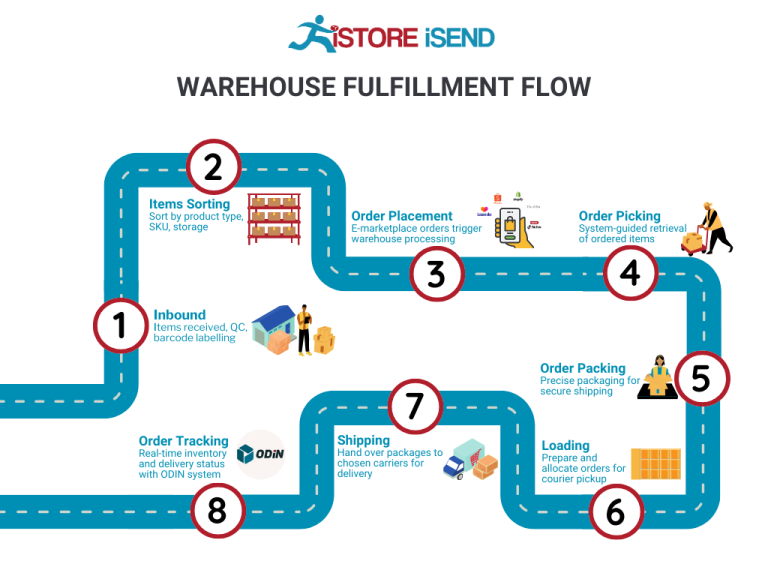
Utilizing technologies such as pick-to-light systems or automated batch picking can significantly enhance picking efficiency, increasing speed and accuracy. This step is crucial as it directly impacts order accuracy; mistakes in picking can lead to incorrect shipments and customer dissatisfaction. The goal is to ensure that every order is picked accurately and promptly, laying the groundwork for a successful packing phase.
4. Order Packing
After items are picked, they proceed to the order packing stage. Here, products are carefully packed into boxes or containers, often using custom packaging solutions that align with the brand’s identity. This step includes verifying that the correct items are packed, which is where technologies like scan-to-pack systems come into play, ensuring each item is scanned before being sealed for shipment.
Efficient packing processes not only protect the products during transit but also enhance the unboxing experience for customers. This is an opportunity to reinforce brand values through thoughtful packaging design and including promotional materials or return instructions. The packing stage is essential as it ensures that orders arrive intact and in a timely manner, directly affecting customer satisfaction and return rates.
5. Shipping & Delivery
The final step in the order fulfillment process is shipping and delivery. Once orders are packed, they are labeled and dispatched to the chosen carrier for delivery to the customer. Businesses often utilize a multi-carrier shipping strategy to ensure flexibility and cost-effectiveness, dynamically selecting the best carrier based on factors such as speed, cost, and destination.
This step is critical because it determines how quickly customers receive their orders, which is a major factor in customer satisfaction. Implementing real-time tracking systems allows customers to monitor their shipments, enhancing transparency and trust. Effective shipping and delivery strategies not only improve the customer experience but also can lead to repeat business and positive brand loyalty.
By understanding and optimizing each step of the order fulfillment process—from receiving inventory to shipping and delivery—e-commerce businesses can significantly enhance their operational efficiency and customer satisfaction, ultimately driving growth and scalability.
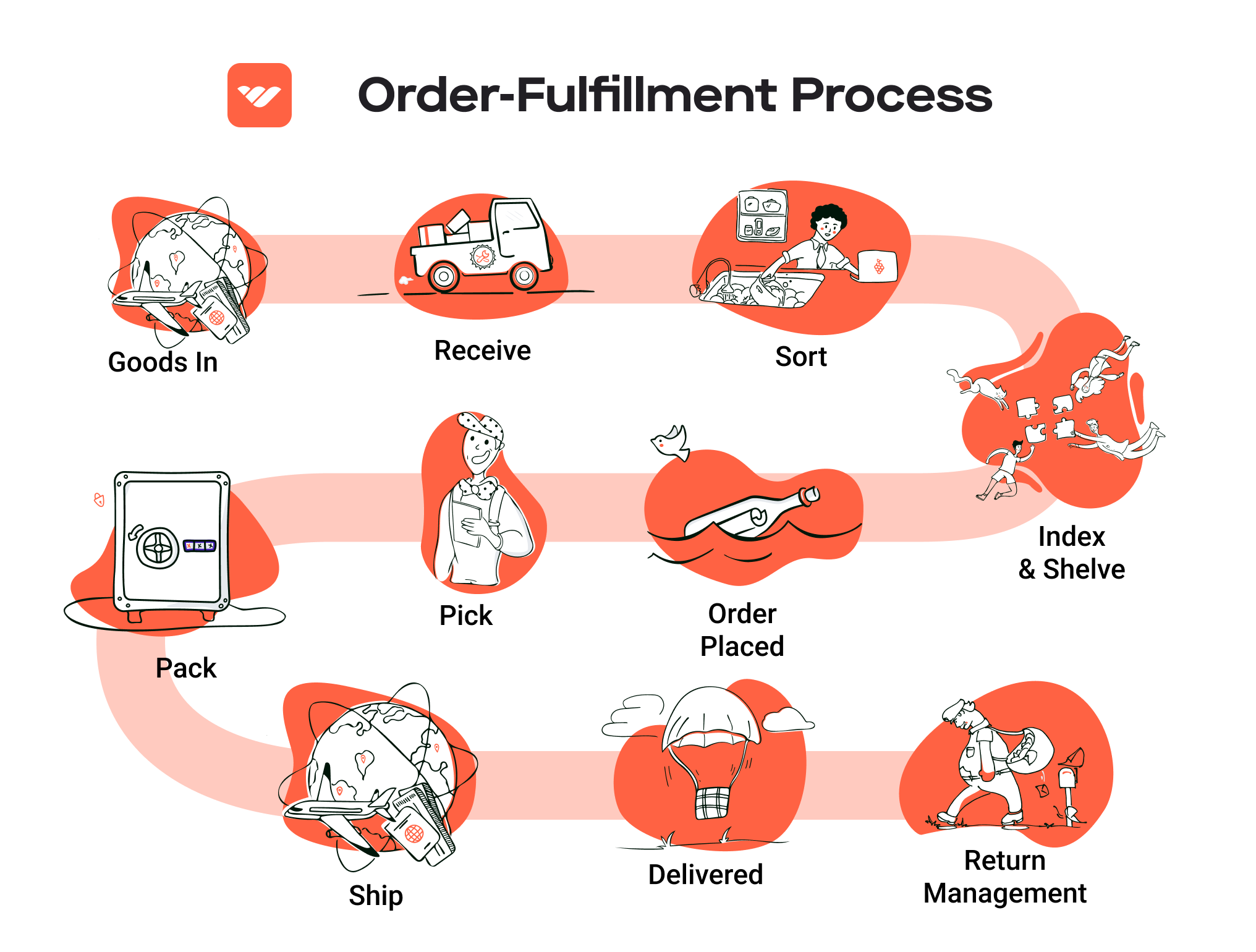
Comparing Fulfillment Models: In-House vs. 3PL vs. Dropshipping
Fulfillment Model Comparison
| Model | Who Handles Inventory | Best For (Business Stage) | Key Advantage | Key Disadvantage |
|---|---|---|---|---|
| In-House Fulfillment | Your Own Team | Established businesses | Complete control over the fulfillment process | High operational costs and resource demands |
| Third-Party Logistics (3PL) | 3PL Provider | Startups to high-growth brands | Scalability and reduced overhead | Less control over fulfillment operations |
| Dropshipping | Supplier or Manufacturer | New businesses and niche markets | Low upfront investment and risk | Lower profit margins and dependency on suppliers |
In-House Fulfillment
In-house fulfillment refers to managing your own warehousing, inventory, and shipping processes. This model is often adopted by established businesses with sufficient resources and a stable order volume. The key advantage of in-house fulfillment is the complete control it offers over inventory management, order processing, and shipping. Companies can tailor their fulfillment processes to meet specific customer needs, implement unique packaging solutions, and maintain stringent quality control. However, this model also presents significant challenges. Operational costs can be high due to the need for a dedicated team, warehouse space, and logistics technology. Additionally, as order volume fluctuates, the fixed costs associated with in-house fulfillment can strain financial resources. Businesses must also invest in training and technology to ensure efficiency, which can divert focus from core business activities.
Third-Party Logistics (3PL)
Third-party logistics (3PL) involves outsourcing the logistics and fulfillment operations to an external provider. This model is particularly beneficial for startups and high-growth brands that need to scale their operations without the overhead costs of managing a warehouse. 3PLs offer a range of services, including inventory management, pick and pack, shipping, and returns processing. One of the primary advantages of using a 3PL is the scalability it provides. As your business grows, a 3PL can quickly adapt to increased order volumes without the need for significant capital investment. Additionally, 3PLs often have established relationships with shipping carriers, enabling them to negotiate better rates and faster shipping times. However, the downside is a potential loss of control over the fulfillment process. Businesses must rely on their 3PL partner to uphold service standards, which can lead to challenges in communication and alignment on customer expectations. It’s crucial for businesses to choose a reliable 3PL partner to mitigate these risks and ensure a seamless customer experience.
Dropshipping
Dropshipping is a fulfillment model where the retailer does not hold inventory but instead relies on suppliers to ship products directly to customers. This model is often favored by new businesses and niche markets due to its low upfront investment and reduced financial risk. Retailers can create an online store without the burden of managing inventory, warehousing, or shipping logistics. This allows them to focus on marketing and customer engagement. However, dropshipping comes with its own set of challenges. Profit margins are typically lower since retailers pay a wholesale price for products, and they also face reliance on suppliers for product quality and shipping speed. Any delays or errors from the supplier can directly impact customer satisfaction. Furthermore, the lack of control over inventory levels can lead to stockouts or overselling, which can harm the retailer’s reputation. For businesses considering dropshipping, it’s essential to establish strong relationships with reliable suppliers to ensure a smooth fulfillment process and maintain customer trust.
In summary, each fulfillment model presents unique advantages and disadvantages that can significantly impact a business’s operations and growth trajectory. Understanding these differences is crucial for e-commerce business owners and operations managers looking to scale effectively. Choosing the right model will depend on various factors, including business stage, resource availability, and customer expectations.
A Deep Dive into Amazon FBA: Pros, Cons, and Who It’s For
Understanding Fulfillment by Amazon (FBA)
Fulfillment by Amazon (FBA) is a service provided by Amazon that allows e-commerce sellers to store their products in Amazon’s fulfillment centers. In turn, Amazon takes care of storage, packaging, and shipping of the products directly to customers. This service enables sellers to leverage Amazon’s extensive logistics network and customer service capabilities, making it easier for them to reach a larger audience.
When a customer places an order for a product fulfilled through FBA, Amazon handles the entire process, including picking the product from the warehouse, packing it, and shipping it directly to the customer. Additionally, FBA products are eligible for Amazon Prime, which can significantly enhance a seller’s visibility and sales potential.
How FBA Works
-
Setting Up: Sellers create an Amazon seller account and set up FBA by selecting which products they want to fulfill through Amazon. They must ensure that their products meet Amazon’s guidelines, including packaging and labeling requirements.
-
Shipping Inventory: Once set up, sellers ship their products to Amazon’s fulfillment centers. Amazon provides guidelines on how to prepare and label the items for shipment.
-
Storage and Management: Amazon stores the products in its warehouses. Sellers can manage their inventory through the Amazon Seller Central dashboard, which provides insights into stock levels and sales performance.
-
Order Fulfillment: When a customer orders a product, Amazon picks, packs, and ships it on behalf of the seller. Amazon also handles returns and customer service inquiries related to these orders.
-
Payment and Fees: Sellers receive payment for their sales, minus the applicable FBA fees, which cover storage, fulfillment, and other associated costs.
Pros of Using FBA
-
Prime Eligibility: One of the most significant advantages of FBA is that products become eligible for Amazon Prime. This status can dramatically increase sales as Prime members often prefer to purchase products that come with free two-day shipping.
-
Customer Trust: Products fulfilled by Amazon benefit from the trust associated with the Amazon brand. Customers are more likely to purchase from sellers who use FBA due to Amazon’s reputation for reliable shipping and customer service.
-
Multi-Channel Fulfillment: FBA allows sellers to utilize Amazon’s fulfillment services for orders placed on other platforms, such as their own websites or other marketplaces. This flexibility can streamline operations and improve efficiency.
-
Scalability: FBA allows businesses to scale quickly without the need to invest in logistics infrastructure. Sellers can focus on marketing and product development while Amazon manages the fulfillment process.
-
Time Savings: By outsourcing fulfillment to Amazon, sellers can save time on order processing, packing, and shipping, allowing them to focus on growing their business.
Cons of Using FBA
-
High Fees: FBA can be costly, especially for sellers with lower-margin products. Fees include storage fees (which can increase during peak seasons) and fulfillment fees per unit shipped. Sellers must carefully calculate these costs to ensure profitability.
-
Strict Inventory Rules: Amazon has strict policies regarding inventory management, including how products are stored and labeled. Non-compliance can result in additional fees or even suspension of FBA services.
-
Commingling Risks: FBA products from different sellers may be commingled in Amazon’s warehouses. This means that sellers might not have control over which specific unit is sent to a customer, potentially leading to issues with product quality and brand consistency.
-
Loss of Control: By using FBA, sellers relinquish some control over their fulfillment process. This includes aspects like packaging, branding, and customer communication, which can impact the overall customer experience.
-
Potential for Stockouts: Sellers must monitor their inventory levels closely. If stock runs out, they may lose visibility on Amazon and miss out on sales opportunities, as listings will no longer be available for purchase.
Who is FBA Best For?
Fulfillment by Amazon is best suited for:
-
Established Brands: Brands that already have a solid product line and are looking to scale can benefit from the extensive reach and logistics capabilities of Amazon.
-
E-commerce Entrepreneurs: Entrepreneurs who are starting their online businesses but want to leverage Amazon’s infrastructure to minimize upfront investment in logistics.
-
High-Volume Sellers: Sellers who move a high volume of products can find FBA advantageous, as the fees may become more manageable relative to their sales.
-
Businesses Seeking Prime Status: Brands that want to tap into the vast Prime membership base can significantly boost their sales through FBA.
-
Sellers Looking for Multi-Channel Fulfillment: Businesses that sell across various platforms and want a streamlined fulfillment process can benefit from using FBA for all their sales channels.
In conclusion, Fulfillment by Amazon offers a robust solution for e-commerce sellers looking to scale their operations while leveraging Amazon’s trusted logistics network. However, it is crucial to weigh the pros and cons to determine if FBA aligns with your business model and growth strategy. Understanding these factors will enable you to make informed decisions and optimize your fulfillment approach.
Core Services Offered by Fulfillment Centers
Inventory Management & Warehousing
Inventory management and warehousing form the backbone of an efficient e-commerce fulfillment operation. This service involves the systematic control of stock levels, ensuring that products are stored properly and are readily available for order fulfillment. Fulfillment centers provide climate-controlled and secure storage facilities that can accommodate various product types, including perishable goods, electronics, and consumer packaged goods (CPGs).
Benefits:
1. Real-Time Visibility: Advanced inventory management systems enable e-commerce businesses to monitor stock levels in real time. This reduces the risk of stockouts or overstocking, which can tie up capital.
2. Cost Efficiency: By utilizing shared warehousing space, businesses can lower their overhead costs. This flexibility allows for scalable storage solutions that grow with demand, enabling businesses to avoid the costs associated with maintaining their own warehouses.
3. Improved Order Accuracy: Fulfillment centers employ rigorous inventory control measures, including SKU-level tracking and cycle counts, which enhance accuracy and reduce discrepancies in stock levels.
Pick and Pack Services
Pick and pack services involve the process of selecting products from inventory (picking) and preparing them for shipment (packing). Fulfillment centers use advanced technology and methodologies—such as batch picking and automated picking systems—to streamline this process.
Benefits:
1. Increased Efficiency: Utilizing automated tools, such as pick-to-light systems and scan-to-pack technologies, fulfillment centers can dramatically increase picking speed while maintaining high accuracy rates, often exceeding 99.8%. This efficiency translates to faster order processing and shipping times.
2. Scalability: As order volumes fluctuate, fulfillment centers can easily scale their pick and pack operations to meet demand, ensuring that e-commerce businesses can handle peak seasons without compromising service levels.
3. Error Reduction: The use of technology, such as barcode scanning, minimizes human error during the picking and packing processes, ensuring that customers receive the correct items in their orders.
Kitting and Assembly
Kitting and assembly services involve bundling multiple products into a single SKU or preparing products for promotional purposes. This can include assembling subscription boxes, gift sets, or promotional kits that require custom packaging or specific assembly instructions.
Benefits:
1. Enhanced Customer Experience: Kitting allows e-commerce businesses to create unique, curated product offerings that enhance the unboxing experience for customers. This can lead to increased customer satisfaction and repeat purchases.
2. Streamlined Operations: By outsourcing kitting to fulfillment centers, businesses can save on labor costs and focus on their core competencies, such as marketing and product development. Fulfillment centers have the expertise and resources to efficiently manage complex kitting processes.
3. Inventory Simplification: By consolidating multiple items into a single SKU, businesses can simplify inventory management, making it easier to track stock levels and replenish items as needed.
Returns Management (Reverse Logistics)
Returns management, also known as reverse logistics, is the process of handling returned products from customers. Fulfillment centers provide dedicated returns management services that streamline this often-complex aspect of e-commerce.
Benefits:
1. Quick Processing: A well-organized returns management system can process returns within 48 hours, ensuring that customers receive prompt refunds or replacements. This responsiveness can significantly enhance customer satisfaction and loyalty.
2. Quality Control: Fulfillment centers typically conduct thorough inspections of returned items to assess their condition and determine whether they can be restocked or need to be repaired. This quality control protects the integrity of the inventory and minimizes losses.
3. Data Insights: Analyzing return data can provide valuable insights into product performance and customer behavior. Understanding the reasons for returns can help e-commerce businesses make informed decisions regarding product quality, descriptions, and marketing strategies.
In summary, the core services offered by fulfillment centers—inventory management and warehousing, pick and pack services, kitting and assembly, and returns management—are crucial for e-commerce businesses looking to scale efficiently. By leveraging these services, businesses can enhance operational efficiency, improve customer satisfaction, and ultimately drive growth in a competitive market.
How to Choose a Fulfillment Partner: A 6-Point Checklist
Location & Warehouse Network
Importance: The geographical location of a fulfillment partner’s warehouses can significantly affect shipping times, costs, and overall customer satisfaction. A strategically located network can help ensure that products reach customers quickly and efficiently, which is especially critical for e-commerce businesses focused on fast delivery.
Questions to Ask:
– How many fulfillment centers do you operate, and where are they located?
– Can you provide coverage maps that show your delivery capabilities?
– What is your average shipping time to major metropolitan areas?
– Do you have the capability to manage multiple warehouses if our needs grow?
Technology & Integrations
Importance: In today’s fast-paced e-commerce environment, a robust technological infrastructure is essential for seamless operations. Your fulfillment partner should have a modern order management system (OMS) and warehouse management system (WMS) that can integrate with your existing e-commerce platforms. This will enhance efficiency, reduce errors, and provide real-time visibility into inventory and order status.
Questions to Ask:
– What technology platforms do you use for order and inventory management?
– Can your systems integrate with our current e-commerce and accounting software?
– Do you offer real-time tracking and analytics for order fulfillment?
– How do you handle system updates or changes in technology?
Specializations (e.g., cold storage, oversized items)
Importance: Depending on your product type, you may require specific fulfillment capabilities, such as cold storage for perishable goods or specialized handling for oversized items. Understanding your partner’s specializations will ensure they can meet your unique needs effectively.
Questions to Ask:
– What types of products do you specialize in handling?
– Do you have temperature-controlled storage options, and what are the compliance standards?
– How do you manage inventory for specialized items, such as fragile products or hazardous materials?
– Can you accommodate custom packaging or kitting for specific product lines?
Scalability & Capacity
Importance: As your business grows, your fulfillment needs will likely change. It’s crucial to choose a partner that can scale operations up or down based on demand fluctuations. A partner with a flexible approach will help you avoid overcommitting resources during slow periods or scrambling for capacity during peak times.
Questions to Ask:
– How do you handle peak seasons or unexpected surges in order volume?
– What is your current capacity, and how quickly can you scale operations if needed?
– Are there any limitations to the types of products or order volumes you can handle?
– What strategies do you have in place for managing inventory during seasonal fluctuations?
Pricing and Contracts
Importance: Understanding the pricing structure and contract terms is vital for maintaining profitability. Look for transparency in pricing and ensure that you comprehend all potential costs, including hidden fees associated with storage, handling, and shipping.
Questions to Ask:
– Can you provide a detailed breakdown of your pricing structure?
– Are there additional fees for services like returns management, special packaging, or expedited shipping?
– What are the terms of your contract? Is there flexibility for adjustments based on changing needs?
– Do you offer any volume discounts or incentives for long-term partnerships?
Customer Support & Reviews
Importance: Reliable customer support is critical for resolving issues promptly and maintaining operational efficiency. Additionally, researching reviews from other clients can provide insights into the partner’s reliability, communication, and overall service quality.
Questions to Ask:
– What customer support options do you provide (e.g., phone, email, live chat)?
– How quickly can we expect responses to inquiries or issues?
– Can you share testimonials or case studies from other clients in our industry?
– What processes do you have in place for handling fulfillment errors or customer complaints?
Conclusion
Choosing the right fulfillment partner is a pivotal decision for any e-commerce business looking to scale effectively. By considering the factors outlined in this checklist, you can make an informed choice that aligns with your operational goals and customer expectations. Remember, a strong partnership can lead to enhanced efficiency, improved customer satisfaction, and ultimately, greater success in your e-commerce endeavors.
Understanding Fulfillment Pricing: A Breakdown of Common Fees
Initial Setup Fees
Initial setup fees are typically one-time charges incurred when you first engage a fulfillment provider. These fees cover the costs associated with integrating your e-commerce platform with the fulfillment center’s systems, setting up your product SKUs in their inventory management system, and configuring any necessary technology for order processing.
The calculation of initial setup fees can vary widely based on the complexity of your operations. For instance, businesses with a large number of SKUs or those requiring specialized processes (such as temperature control for sensitive items) may face higher fees. It’s essential to discuss your specific needs upfront to get a clear estimate. Some providers may waive or reduce these fees if you commit to a longer-term contract, so it’s worth negotiating.
Receiving Fees
Receiving fees are charged for the process of accepting and processing incoming inventory shipments. This fee generally covers the labor costs involved in unloading, inspecting, and entering inventory into the system.
Receiving fees can be calculated on a per-pallet or per-box basis, depending on the volume and complexity of the incoming goods. For example, a provider might charge a standard fee for each pallet received, which could include additional charges for any special handling required, such as inspecting damaged goods or sorting items based on SKU. To get the best deal, ensure you understand how these fees are structured and what your typical inventory shipments will look like.
Storage Fees (per pallet/bin)
Storage fees are ongoing charges for the space your inventory occupies in the fulfillment center. These fees can be calculated on a per-pallet or per-bin basis, depending on how your products are stored.
Most fulfillment centers charge monthly storage fees, which can vary based on factors such as the size of the pallets, the type of products being stored, and the overall volume of inventory. For example, higher fees may apply to climate-controlled spaces or specialized storage for sensitive products. It’s crucial to estimate your inventory turnover rates and choose a provider whose storage fees align with your business model.
Pick & Pack Fees (per item/order)
Pick and pack fees are charged for the labor involved in selecting items from inventory and preparing them for shipment. This fee structure can be based on the number of items picked, the complexity of the order, or even a flat rate per order.
For example, a fulfillment provider might charge a standard fee for picking items from a single SKU but increase that fee for orders that include multiple SKUs or require special packaging. Understanding how these fees are structured can help you optimize your product offerings and reduce overall fulfillment costs. Additionally, ask about any volume discounts available, as many providers offer lower rates for businesses with higher order volumes.
Shipping Fees
Shipping fees cover the costs associated with transporting your orders from the fulfillment center to the customer. These fees can vary significantly based on factors such as shipping method (standard, expedited, international), weight, dimensions, and destination.
Fulfillment centers often have partnerships with multiple carriers, allowing them to choose the most cost-effective shipping option for each order. Shipping fees may also include additional charges for services like signature confirmation or special handling. To manage shipping costs effectively, consider discussing your shipping strategy with your fulfillment provider and reviewing their carrier relationships to ensure you’re getting the best rates available.
Tips for Getting an Accurate Quote
-
Be Transparent About Your Needs: When requesting a quote, provide detailed information about your product catalog, expected order volumes, and any special handling requirements. The more the provider knows, the more accurate the quote will be.
-
Request a Breakdown of Fees: Ask for a detailed breakdown of all potential fees, including setup, receiving, storage, pick and pack, and shipping. This transparency helps you compare providers effectively.
-
Consider Volume Discounts: Inquire about discounts for higher volumes or longer contract commitments. Many providers are willing to negotiate pricing based on your projected growth.
-
Evaluate Flexibility: Understand how fees might change with fluctuations in your business. A provider that offers scalable solutions can help you manage costs as your order volume changes.
-
Seek References: Ask for references from businesses similar to yours to gauge their experiences with the fulfillment provider. This can provide insights into hidden fees or unexpected costs.
By keeping these considerations in mind and thoroughly evaluating potential fulfillment partners, you can better navigate the complexities of fulfillment pricing and choose a provider that aligns with your business goals.
Frequently Asked Questions (FAQs) about Fulfillment
1. What is QuickBox Fulfillment?
QuickBox Fulfillment is a comprehensive logistics solution designed specifically for high-growth e-commerce brands. It offers tailored fulfillment services, including warehousing, inventory management, pick and pack, and returns management, ensuring efficient order processing and customer satisfaction.
2. What is a fulfillment center, and how does it differ from a warehouse?
A fulfillment center is a specialized facility focused on fulfilling customer orders, including picking, packing, and shipping products directly to consumers. In contrast, a warehouse primarily serves as a storage space for goods and inventory without necessarily handling order fulfillment. Fulfillment centers are equipped with advanced technology and processes to ensure speedy order delivery.
3. What is a 3PL (Third-Party Logistics)?
A 3PL is a service provider that manages logistics and supply chain operations on behalf of a business. This includes warehousing, inventory management, order fulfillment, shipping, and returns processing. Partnering with a 3PL like QuickBox allows e-commerce businesses to scale their operations without investing in their own logistics infrastructure.
4. How much do fulfillment services cost?
The cost of fulfillment services varies based on several factors, including order volume, storage needs, and specific service offerings. QuickBox provides customized pricing models tailored to your business’s unique requirements, ensuring cost-effective solutions that align with your growth goals.
5. How does QuickBox ensure order accuracy?
QuickBox employs advanced technologies such as scan-to-pack systems and quality audits, maintaining an order accuracy rate of over 99.8%. Each item is scan-verified before packing, and 7% of outbound orders undergo manual inspection to uphold elite fulfillment standards.
6. What types of businesses can benefit from QuickBox Fulfillment?
QuickBox specializes in serving high-growth brands across various sectors, including beauty, wellness, supplements, pet health, and consumer packaged goods (CPG). Whether your business operates on a direct-to-consumer (DTC), subscription, or marketplace model, QuickBox can tailor its services to meet your needs.
7. Can QuickBox handle international shipping?
Yes, QuickBox offers international shipping options, including Delivered Duty Paid (DDP) and Delivered Duty Unpaid (DDU) services. This flexibility allows businesses to expand their reach beyond domestic markets while ensuring compliance with international shipping regulations.
8. What kind of technology does QuickBox use for order management?
QuickBox utilizes a custom-configured Order Management System (OMS) and Warehouse Management System (WMS) that provides real-time visibility into inventory and order flow. This technology enables businesses to track their inventory, automate workflows, and access transparent billing, ensuring operational efficiency.
9. How quickly can QuickBox process returns?
QuickBox has a dedicated returns management team that processes returns within 48 hours. This efficient turnaround helps maintain customer satisfaction and brand loyalty by ensuring that customers receive timely updates and resolutions for their return requests.
10. What support does QuickBox provide to its clients?
QuickBox assigns a dedicated Client Service Manager (CSM) to each partnership, ensuring personalized support and proactive monitoring of service-level agreements (SLAs). Clients benefit from real-time assistance, weekly status meetings, and quarterly business reviews to align on priorities and performance metrics.
Conclusion: Is Outsourcing Fulfillment the Right Move for Your Business?
Assessing the Benefits of Outsourcing Fulfillment
Outsourcing your fulfillment can be a transformative strategy for e-commerce businesses looking to scale. One of the most significant benefits is the time savings; by entrusting fulfillment to a specialized partner, you free up your internal resources to focus on core business functions such as marketing, product development, and customer engagement. This shift not only enhances operational efficiency but also allows for a more strategic allocation of your team’s efforts.
Scalability is another crucial advantage. As your sales volume fluctuates, having a flexible fulfillment partner means you can easily adjust your order processing capacity without the burdens of managing additional warehousing and staffing. This adaptability is vital during peak seasons, where demand can surge unexpectedly. A proficient fulfillment service ensures that your operations can scale seamlessly, maintaining service quality while you grow.
Moreover, partnering with a fulfillment expert brings invaluable industry knowledge and technology to the table. With a provider that understands the nuances of logistics and supply chain management, you benefit from established processes that enhance accuracy and speed. This expertise reduces the likelihood of errors, improves inventory management, and ultimately leads to higher customer satisfaction rates.
Choosing the right fulfillment partner is paramount to your growth trajectory. It is not just about cost savings; it’s about aligning with a company that shares your vision and values, offering tailored solutions that meet your specific needs.
As you contemplate the future of your e-commerce operations, consider conducting a thorough audit of your current shipping processes. Ask yourself: Are you maximizing efficiency? Is your fulfillment strategy aligned with your growth objectives? If the answer is unclear, it may be time to explore the benefits of partnering with a fulfillment service. Taking this step could be the catalyst for your next phase of growth.
Important Disclaimer
⚠️ Important Disclaimer
The information in this guide is for educational purposes. Fulfillment services, pricing, and platform features change frequently. Always conduct your own due diligence and consult with providers directly before making business decisions.
